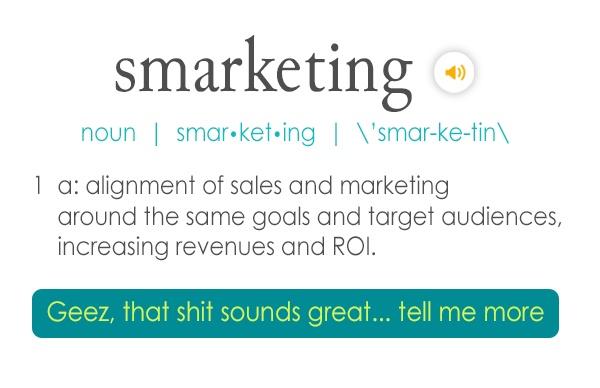Many industries are weighed down with negativity about sales cycles. Sales pros might suspect the nature of their industry makes it impossible to accelerate the cycle. They may believe they are hampered by prospects' processes or corporate culture ... or that they just “can’t make up their minds.”
In reality, prospects have changed the way they buy. B2B buyers are admitting that their sales cycles are longer; almost half of respondents (48%) said their purchase cycle has increased somewhat since last year. According to the 2016 B2B Buyers Survey Report from DemandGen, "reasons for the lengthy buying cycle include:
- Buyers conduct a more detailed ROI analysis before a purchase;
- The number of people — especially executives — who participate in the B2B buying process has increased; and
- As the solution marketplace continues to expand, buyers spend more time conducting research and use more sources to investigate purchases."
No matter what your industry, there are clear ways to shorten the sales cycle using proven lessons of inbound sales. Inbound sales focuses on informing prospects and building relationships; its core techniques apply to any enterprise. Using inbound marketing and inbound sales together, you're able to shorten your sales cycle by giving visitors what they're looking for in their sales process: educational information.
Let’s look at four effective ways to shorten your sales cycle using inbound marketing techniques.
1) Develop Your Must-Have Website Pages
There are several website pages your site can’t do without if you want to accelerate the sales cycle. These pages help users get informed and self-qualify by learning more about your products and services, shifting effort from your team to your clients while enhancing engagement.
Key website pages include:
- Case Studies and Testimonials: Research shows that these are the most frequently-accessed pages prior to contacting a sales representative. The effect is particularly pronounced in B2B, where decision-makers have preferred these formats for years.
- Products & Services Pages: Every product and service should have a page dedicated to it. This helps prospects identify the offerings that apply to them, clearing the path to take action.
- Industry Focused Pages: Today, buyers are specifically looking for vendors who understand their particular business. So, showcase the industries you're particularly focused on to ensure that prospects in those industries know that you're an expert.
- Contact Us Page: A well-designed contact page is perfect for getting prospects to take the next step. To maximize convenience, the page should include a Google map, phone number, email contact, and social media addresses.
In order to take advantage of using these key pages, make sure your website is responsive. A responsively designed website instantly resize content, eliminate clutter, and introduce navigational aids so mobile users have a premium experience. Google has made major algorithm changes to drive non-responsive sites lower on search results in the past year; they now penalize sites that are not mobile-optimized. Make sure yours is not one of those effected.
2) Create Premium Educational Content
 Education-focused marketing does the heavy lifting by helping prospects understand how your solutions address their pain points. Share content that establishes your expertise and value at no cost. Using content to attract your key prospects will bring you qualified leads that are looking to be educated. As prospects learn about you and get answers to their questions, they develop trust in your brand that facilitates sales. That begins with excellent content targeted to their needs. The premium educational content should be the basis of all your emails and should be at the forefront of your sales approach.
Education-focused marketing does the heavy lifting by helping prospects understand how your solutions address their pain points. Share content that establishes your expertise and value at no cost. Using content to attract your key prospects will bring you qualified leads that are looking to be educated. As prospects learn about you and get answers to their questions, they develop trust in your brand that facilitates sales. That begins with excellent content targeted to their needs. The premium educational content should be the basis of all your emails and should be at the forefront of your sales approach.
3) Align Your Process With the Buyer’s Journey
The buyer’s journey starts with a problem and ends with a solution. Many of your prospects are looking to be educated and search for solutions online. Provide content that resonates at each stage in the buyers' journey, and make this information easily accessible on your website so your prospects can find you. Answer those commonly asked questions with premium content and solutions.
Once you do this, next it’s necessary to merge sales and marketing into a cooperative unit. This way, you can analyze the steps of your prospects’ own journey across channels and intervene where it matters most, you can also understand what content pieces appeal most to your prospects. To create the "smarketing" - the alignment of sales and marketing - that's needed internally to help guide your prospects in their buyers journey, your teams must define a sales qualified lead verses a marketing qualified lead and clearly determine how best to effectively pass off a lead. I wrote a blog post about this very topic recently; read it here.
4) Capture Critical Information on Fit and Need.
Only prospects can give you the facts you need about them. With dynamic forms, you can capture data from prospects for each step they take in your sales funnel. That will help you ensure they have the Budget, Authority, Need, and Timeline matching your offer. Pushing prospects to self-qualify by verifying BANT saves time and marks the moment they can meet your sales team. In discussions, representatives can clarify their needs by asking questions on GPCT – Goals, Plans, Challenges, and Timelines.
Getting prospects to answer BANT questions is critical: it pre-qualifies leads and protects you from making a major time investment on someone who isn't able to purchase. Once you're sure a prospect's needs and resources align with your offerings, you will better know the correct solution for them and understand pain points a bit better. These questions help you zoom in on the client's ideal solution. They can identify opportunities for cross-selling, upselling, and custom solution development both immediately and in the future.






